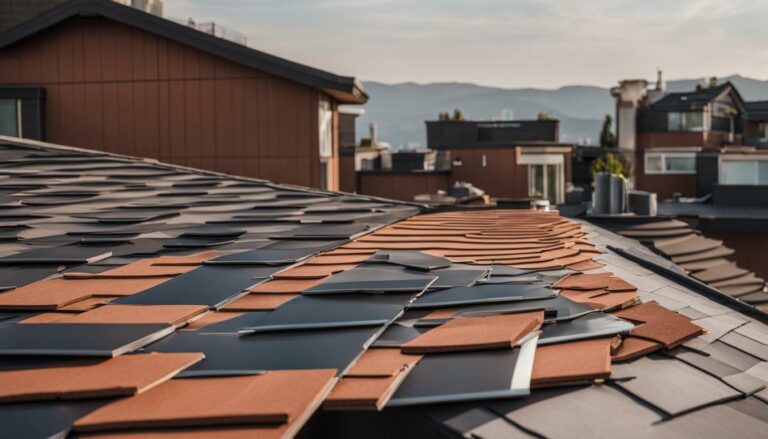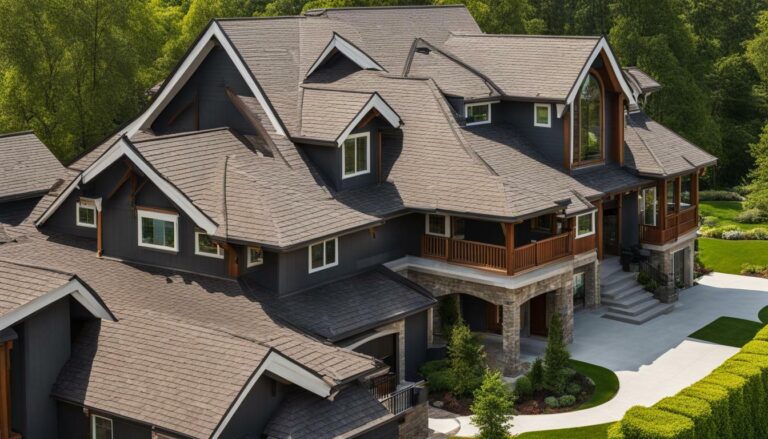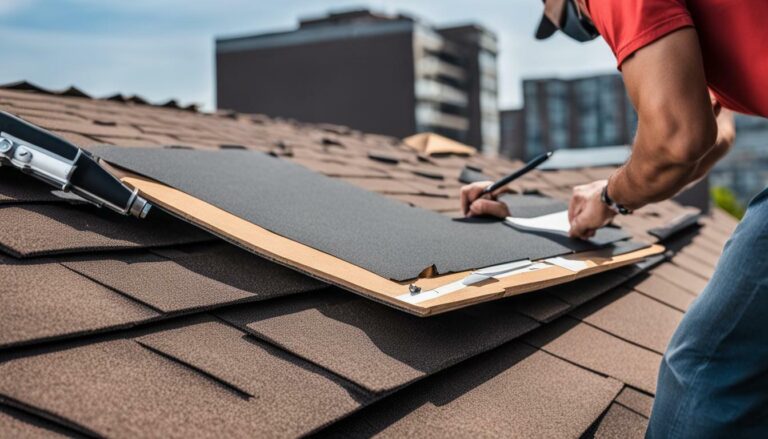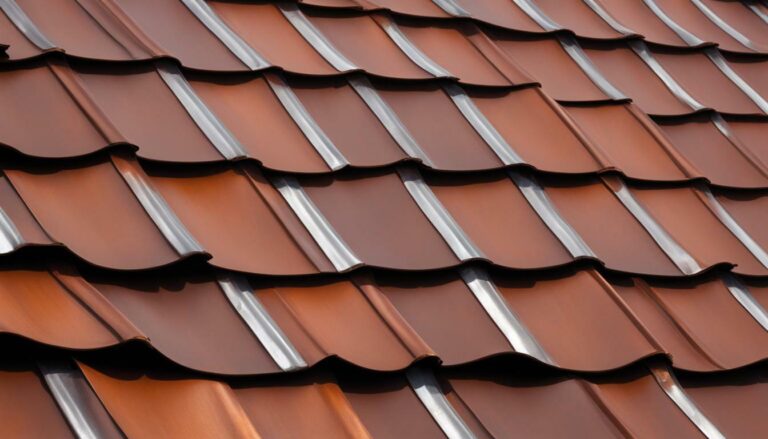Explore Your Roof Thermal Insulation Options Today.
Are you looking for the best roof thermal insulation options to maximize energy efficiency and comfort in your home? Roof insulation plays a crucial role in maintaining a comfortable living space while reducing energy costs. With various types of insulation available, it’s important to choose the right option for your specific needs.
There are several types of roof insulation materials to consider, such as fiberglass batts, spray foam, rigid foam boards, gypsum cover boards, perlite cover boards, wood fiber cover boards, and fiber cement cover boards. Each material has its own advantages and disadvantages, so it’s essential to evaluate factors like budget, climate, roof type, and environmental impact before making a decision.
- Choosing the right roof insulation is crucial for maintaining a comfortable home environment while reducing energy costs.
- Fiberglass batts, spray foam, rigid foam boards, and cover boards are some of the most common types of roof insulation materials available.
- Factors such as budget, climate, roof type, and environmental impact should be considered when selecting the appropriate insulation option.
- Proper preparation, maintenance, and regular inspections are necessary to ensure the effectiveness and longevity of roof insulation.
- Investing in roof insulation offers benefits like reduced heating and cooling costs, enhanced indoor comfort, decreased carbon footprint, improved property value, and sound insulation.
The Benefits of Roof Insulation
Installing roof insulation offers numerous benefits that can significantly impact your home’s energy efficiency and overall comfort. From reducing heating and cooling costs to enhancing indoor comfort, this essential home improvement can make a noticeable difference. Additionally, roof insulation helps decrease your carbon footprint, improve property value, and provide sound insulation.
One of the primary advantages of roof insulation is the substantial savings it can bring to your energy bills. By effectively insulating your roof, you can minimize heat loss during the winter and reduce heat gain during the summer. This means less dependence on heating and cooling systems, resulting in lower energy consumption and cost savings in the long run.

| Benefits of Roof Insulation |
|---|
| Reduced heating and cooling costs |
| Enhanced indoor comfort |
| Decreased carbon footprint |
| Improved property value |
| Sound insulation |
Aside from energy savings, roof insulation also improves the overall comfort of your home. It helps maintain a stable indoor temperature, reducing drafts and cold spots in the winter and keeping your home cooler in the summer. This stable temperature not only enhances your comfort but also prevents temperature extremes that can impact your health and well-being.
Moreover, investing in roof insulation contributes to environmental sustainability. As you decrease your energy consumption, you reduce greenhouse gas emissions, leading to a smaller carbon footprint. By prioritizing energy efficiency, you actively participate in efforts to combat climate change and promote a greener future.
In conclusion, the benefits of roof insulation are manifold. From financial savings to increased comfort and environmental friendliness, this essential home improvement is a worthwhile investment. Whether you opt for fiberglass batts, spray foam, or other insulation materials, the positive impact on your home and the environment is undeniable.
Types of Roof Insulation Materials
When it comes to roof insulation, there are several types of materials to choose from, each with its own unique properties and advantages. Selecting the right insulation material is crucial for achieving optimal thermal performance and energy efficiency in your home. Let’s explore some of the most common options:
- Fiberglass Batts: These are made from thin and flexible glass fibers that are bound together. Fiberglass batts are affordable and easy to install, making them a popular choice for many homeowners.
- Spray Foam: Spray foam insulation expands and hardens upon application, creating a seamless and airtight barrier. It provides excellent thermal insulation and helps to prevent air leakage, which can lead to energy loss.
- Rigid Foam Boards: Rigid foam boards are lightweight and easy to handle. They offer high insulation value and resistance to moisture, making them suitable for various roof types.
- Gypsum Cover Boards: Gypsum cover boards are made from compressed gypsum, providing both insulation and protection against fire and moisture. They are commonly used in commercial roofing systems.
- Perlite Cover Boards: Perlite cover boards are lightweight and durable. They have excellent resistance to fire, moisture, and fungi, making them a reliable choice for roof insulation.
- Wood Fiber Cover Boards: Wood fiber cover boards offer excellent thermal and sound insulation properties. They are environmentally friendly and provide good resistance against wind uplift.
- Fiber Cement Cover Boards: Fiber cement cover boards are made from a mixture of cement and cellulose fibers. They are durable, moisture-resistant, and can tolerate high temperatures.
Each insulation material comes with its own considerations and benefits, so it’s important to evaluate your specific needs and consult with a professional before making a decision. With the right choice of roof insulation material, you can ensure energy efficiency, reduce heat transfer, and create a comfortable living environment in your home.
Table: Comparison of Roof Insulation Materials
| Insulation Material | Thermal Insulation | Moisture Resistance | Fire Resistance | Environmental Impact |
|---|---|---|---|---|
| Fiberglass Batts | Good | Fair | Poor | Low |
| Spray Foam | Excellent | Excellent | Good | Medium |
| Rigid Foam Boards | Excellent | Good | Good | Medium |
| Gypsum Cover Boards | Good | Excellent | Excellent | Low |
| Perlite Cover Boards | Good | Excellent | Good | Low |
| Wood Fiber Cover Boards | Good | Good | Fair | High |
| Fiber Cement Cover Boards | Good | Good | Excellent | High |
Note: The table above provides a general comparison of the key characteristics of different roof insulation materials. Your specific requirements and local building codes should be considered when choosing the most suitable option for your roof.

Remember, selecting the right roof insulation material is an important decision that can impact the energy efficiency, comfort, and overall performance of your home. Consult with professionals in the field to determine the best insulation solution for your specific needs and enjoy the benefits of a well-insulated roof.
Factors to Consider When Choosing Insulation
Before making a decision on which insulation to choose, it’s essential to consider factors such as budget, climate conditions, the type of roof you have, and the environmental impact of the insulation material. Each of these factors plays a crucial role in determining the most suitable insulation option for your needs.
Budget
One of the first things to consider is your budget. Different types of insulation materials come with varying costs, so it’s important to establish a budget range that you are comfortable with. Remember to factor in not just the initial cost of the insulation material, but also any installation or maintenance expenses.
Climate Conditions
The climate in your region also plays a significant role in choosing the right insulation for your roof. If you live in a colder climate, you’ll want to prioritize insulation materials with a higher R-value to provide better thermal resistance. In warmer climates, focus on insulation materials with good heat reflecting properties to keep your home cooler.
Type of Roof
The type of roof you have is an important consideration as well. Different insulation materials are better suited for specific roof types. For example, spray foam insulation can be applied to roofs with complex shapes or uneven surfaces, while fiberglass batts are often used for roofs with standard framing.
Environmental Impact
Lastly, it’s important to consider the environmental impact of the insulation material you choose. Look for insulation options that are made from sustainable or recycled materials and have a low carbon footprint. This will not only benefit the environment but also contribute to a healthier home atmosphere.
| Factors to Consider | Considerations |
|---|---|
| Budget | Establish a budget range and consider installation and maintenance costs. |
| Climate Conditions | Choose insulation materials with suitable thermal resistance or heat reflecting properties based on your climate. |
| Type of Roof | Select insulation materials that are compatible with your roof’s structure and shape. |
| Environmental Impact | Opt for insulation materials made from sustainable or recycled materials with a low carbon footprint. |
Considering these factors will help you make an informed decision when selecting the right insulation for your roof. Take the time to research and consult with professionals to ensure you choose an option that provides optimal performance, energy efficiency, and long-lasting benefits.
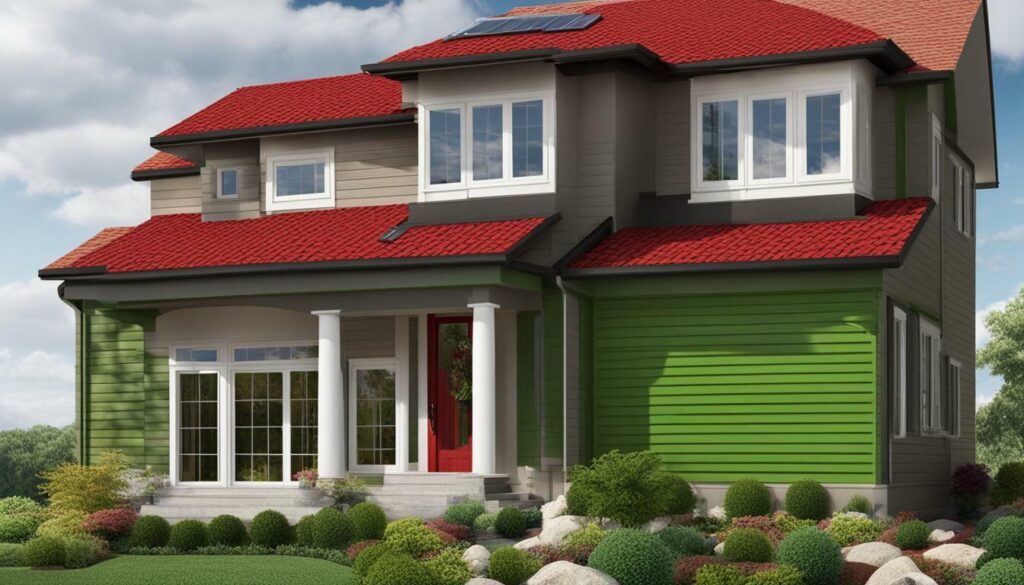
Before you begin the installation process, it’s crucial to properly prepare your roof to ensure effective and efficient insulation. A well-prepared roof will not only enhance the insulation’s performance but also prolong its lifespan. Here are some essential steps to take before installing roof insulation:
- Assess the condition of your roof: Inspect your roof for any signs of damage, such as leaks, cracks, or rotten wood. Addressing these issues before insulation installation will prevent further damage and ensure a stable foundation for the insulation.
- Determine the required insulation thickness: The recommended insulation thickness depends on factors like the climate and the desired level of insulation. Calculate the appropriate insulation thickness based on these factors to optimize energy efficiency and comfort.
- Prepare the surface: Make sure the surface of your roof is clean, dry, and free from any debris or obstructions. Remove any existing insulation if necessary, and repair or replace any damaged areas.
- Seal air leaks: Check for any gaps or cracks in the roof structure that can cause air leakage. Use sealants or caulking to seal these gaps and create an airtight barrier for the insulation.
- Consider ventilation: Adequate ventilation is crucial for preventing moisture buildup and maintaining the longevity of the insulation. Ensure that your roof has proper ventilation systems in place or consult a professional for guidance.
By following these preparation steps, you can ensure a smooth and successful installation process for your roof insulation. Remember that proper preparation is key to maximizing the benefits of insulation and creating a comfortable and energy-efficient home environment.
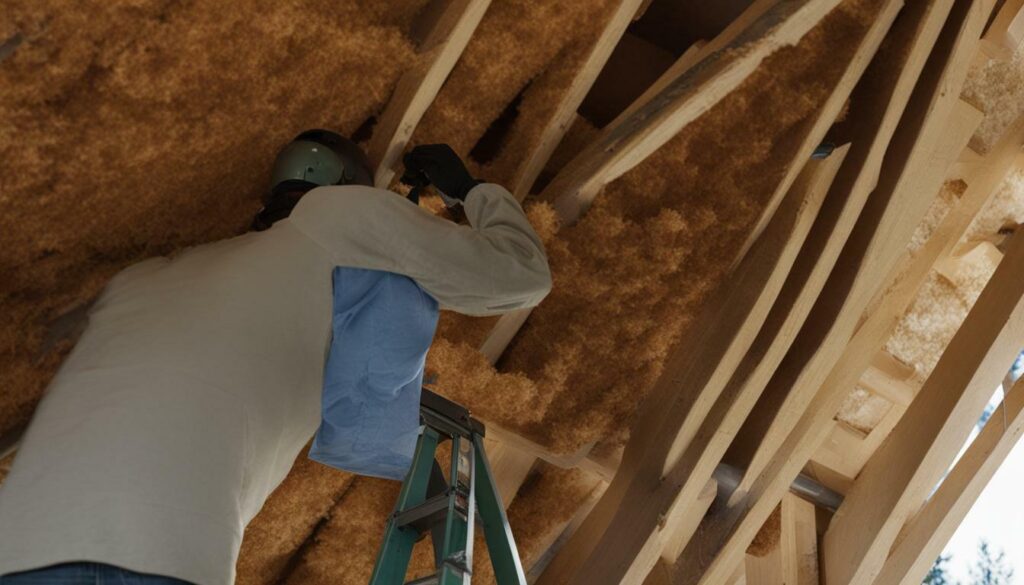
| Benefits of Proper Preparation | Consequences of Inadequate Preparation |
|---|---|
|
|
Remember, the success of your roof insulation installation depends on the careful preparation of your roof. Take the time to assess your roof’s condition, determine the optimal insulation thickness, and seal any air leaks before proceeding with the installation. By doing so, you’ll ensure that your insulation performs at its best, keeping your home comfortable and energy-efficient for years to come.
Quote:
“Proper preparation is the foundation of a successful roof insulation installation.”
Maintenance Tips for Roof Insulation
To maintain the optimal performance of your roof insulation, regular maintenance is essential. Inspections should be conducted periodically to identify any potential issues or damage that may compromise the insulation’s effectiveness. Addressing air leaks is crucial, as even small gaps can result in heat loss and decreased energy efficiency.
Upgrading or adding additional layers of insulation can be beneficial in improving the insulation’s R-value and enhancing its thermal resistance. This is particularly important if your existing insulation is outdated or does not meet the recommended insulation thickness for your climate.
Creating a maintenance plan can help ensure that you stay on top of regular upkeep. Scheduled inspections, preferably twice a year, will allow you to identify and address any air leaks promptly. It is also important to have a professional assess the condition of your roof and insulation to determine if any repairs or upgrades are necessary.

By investing time and effort into regular maintenance, you can extend the lifespan of your roof insulation and maximize its energy-saving benefits. Remember, maintaining your roof insulation not only helps you save on heating and cooling costs but also contributes to the overall comfort and sustainability of your home.
| Maintenance Tips for Roof Insulation | Benefits |
|---|---|
| Regular inspections | – Identifying air leaks and addressing them promptly – Maintaining insulation integrity – Detecting and preventing potential damage |
| Addressing air leaks | – Enhancing energy efficiency – Reducing heating and cooling costs – Improving indoor comfort |
| Upgrading or adding insulation | – Increasing thermal resistance (R-value) – Maximizing energy-saving potential |
Quote:
“Regular inspections and addressing air leaks are essential for maintaining the effectiveness and energy efficiency of your roof insulation.” – Roof Insulation Expert
Energy-Efficient and Cost-Effective Options
If you’re looking for energy-efficient and cost-effective roof insulation, there are options available that provide excellent insulation performance without breaking the bank. With the rising awareness of sustainable living and the increasing need to reduce energy consumption, choosing the right insulation for your roof is essential.
One option worth considering is fiberglass batts. They are affordable and offer good thermal resistance. Fiberglass batts come in pre-cut sizes, making installation relatively easy. Another cost-effective option is spray foam insulation, which provides an airtight seal and excellent thermal performance. It expands upon application, filling even the smallest gaps and crevices, ensuring maximum insulation efficiency.
If you’re looking for an eco-friendly and energy-efficient solution, rigid foam boards are a great choice. They have a high R-value and provide excellent insulation. Additionally, they are resistant to moisture and mold, making them ideal for areas with high humidity. Another sustainable option to consider is wood fiber cover boards. They are made from recycled wood fibers and offer good thermal insulation while being environmentally friendly.

To help you make an informed decision, here’s a table summarizing some energy-efficient and cost-effective roof insulation options:
| Insulation Material | Pros | Cons |
|---|---|---|
| Fiberglass Batts | Affordable, easy installation | May require additional air sealing |
| Spray Foam Insulation | Provides an airtight seal, expands to fill gaps | Requires professional installation |
| Rigid Foam Boards | High R-value, resistant to moisture | Can be more expensive |
| Wood Fiber Cover Boards | Environmentally friendly, good thermal insulation | May be less readily available |
By considering these options and evaluating your budget, climate, and environmental impact, you can choose the best energy-efficient and cost-effective roof insulation for your home. Remember, proper installation and regular maintenance are key to ensuring the long-term effectiveness of your insulation and maximizing energy savings.
Eco-Friendly Roof Insulation Solutions
If you prioritize sustainability and want to reduce your carbon footprint, eco-friendly roof insulation options are worth considering. These insulation materials are designed to provide effective thermal performance while minimizing environmental impact. By choosing eco-friendly insulation, you can contribute to a greener future and create a more energy-efficient home.
One popular eco-friendly option is cellulose insulation, which is made from recycled paper fibers. It offers excellent thermal resistance and soundproofing properties while reducing waste and promoting recycling. Another sustainable choice is sheep’s wool insulation, which is natural, biodegradable, and renewable. Sheep’s wool is an effective insulator, with the ability to regulate temperature and absorb moisture.
Additionally, there are eco-friendly insulation options made from recycled materials, such as recycled plastic bottles or denim. These materials repurpose waste materials that would otherwise end up in landfills. They provide efficient insulation while reducing the demand for new resources.
When considering eco-friendly roof insulation, it’s important to choose materials that have been certified as environmentally friendly, such as those carrying the Energy Star label. These certifications ensure that the insulation meets strict standards for energy efficiency and environmental sustainability.

| Insulation Material | Environmental Benefits |
|---|---|
| Cellulose insulation | Made from recycled paper fibers |
| Sheep’s wool insulation | Natural, biodegradable, and renewable |
| Recycled plastic bottle insulation | Repurposes waste material |
| Recycled denim insulation | Repurposes waste material |
By opting for eco-friendly roof insulation, you can create a more sustainable living space while enjoying the benefits of increased energy efficiency and reduced carbon emissions. Consider consulting with a professional insulation contractor to determine the most suitable eco-friendly insulation options for your specific needs and climate conditions.
Roof Insulation for Different Climates
The climate you live in plays a significant role in determining the most suitable roof insulation options for optimal thermal performance. Whether you experience hot summers, cold winters, or a combination of both, choosing the right insulation can help maintain a comfortable temperature inside your home while reducing energy consumption. Here are some recommended roof insulation options based on different climate conditions:
1. Hot and Humid Climates:
In regions with hot and humid climates, it is essential to choose insulation materials that can effectively resist heat transfer and moisture intrusion. One recommended option is spray foam insulation, which provides an airtight barrier that minimizes heat infiltration and prevents condensation. Another suitable choice is rigid foam boards, known for their excellent thermal resistance and moisture resistance properties.
2. Cold and Snowy Climates:
In areas with cold and snowy winters, insulation that offers high thermal resistance and can withstand extreme temperatures is crucial. Fiberglass batts are a popular choice for cold climates, as they provide good insulation value and are relatively affordable. Rigid foam boards, due to their high insulation performance, are also suitable for cold and snowy regions.
3. Warm and Mild Climates:
In regions with warm and mild climates, where temperature fluctuations are less extreme, insulation options that provide effective thermal resistance without excessive insulation thickness are preferred. Fiberglass batts are a versatile option that offers good insulation value, while spray foam insulation can provide both insulation and air sealing benefits.
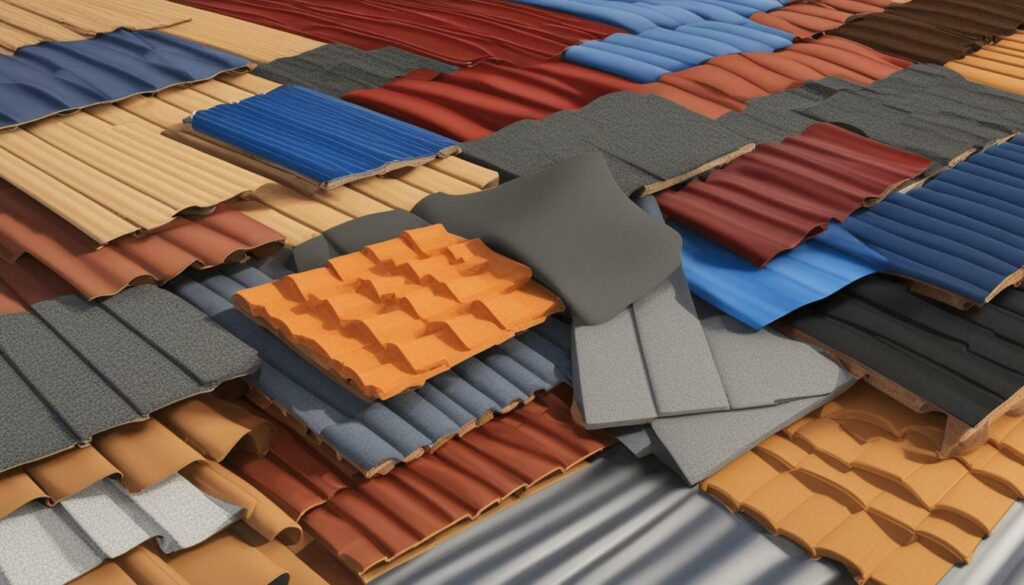
Remember that the specific insulation requirements for your home may vary based on factors such as roof type, building design, and local building codes. It’s always recommended to consult with a professional insulation contractor who can assess your unique needs and recommend the most suitable insulation solution for your climate.
By selecting the right roof insulation for your climate, you can create a more comfortable living environment, save on energy costs, and reduce your carbon footprint. Invest in proper insulation to ensure long-term energy efficiency and enjoy the benefits it brings to your home.
Conclusion
Considering the wide range of roof insulation options available, it’s crucial to explore and select the best solution that aligns with your specific needs, budget, and environmental considerations. Roof insulation plays a vital role in maintaining a comfortable home environment while reducing energy costs. By investing in the right insulation, you can experience a range of benefits that positively impact your home and the environment.
There are various types of roof insulation materials to choose from, including fiberglass batts, spray foam, rigid foam boards, gypsum cover boards, perlite cover boards, wood fiber cover boards, and fiber cement cover boards. Each option has its own advantages and disadvantages, so it’s important to carefully consider factors such as your budget, local climate, roof type, and environmental impact before making a decision.
Before installing roof insulation, proper preparation is essential. This includes assessing the condition of your roof and determining the required insulation thickness. By taking these steps, you can ensure that the insulation is installed correctly and effectively.
Maintaining your roof insulation is equally important. Regular inspections, addressing air leaks, and upgrading or adding additional layers of insulation can help prolong its effectiveness and enhance its performance. With proper maintenance, you can enjoy the long-term benefits of reduced heating and cooling costs, enhanced indoor comfort, decreased carbon footprint, improved property value, and sound insulation.
In conclusion, roof insulation is an investment that offers significant advantages for homeowners. By selecting the right insulation material, adequately preparing for installation, and implementing proper maintenance, you can create a more energy-efficient and comfortable living space while contributing to a sustainable future.
FAQ
Q: Why is roof insulation important?
A: Roof insulation is crucial for maintaining a comfortable home environment and reducing energy costs.
Q: What are the different types of roof insulation materials?
A: The various types of roof insulation materials include fiberglass batts, spray foam, rigid foam boards, gypsum cover boards, perlite cover boards, wood fiber cover boards, and fiber cement cover boards.
Q: What factors should I consider when choosing insulation for my roof?
A: Factors such as budget, climate, roof type, and environmental impact should be considered when selecting the right insulation for your roof.
Q: What preparation is necessary before installing roof insulation?
A: Proper preparation involves assessing the condition of the roof and determining the required insulation thickness.
Q: How can I maintain the effectiveness of my roof insulation?
A: Regular maintenance, such as inspections, addressing air leaks, and upgrading or adding additional layers of insulation, can help ensure the longevity and effectiveness of the insulation.

